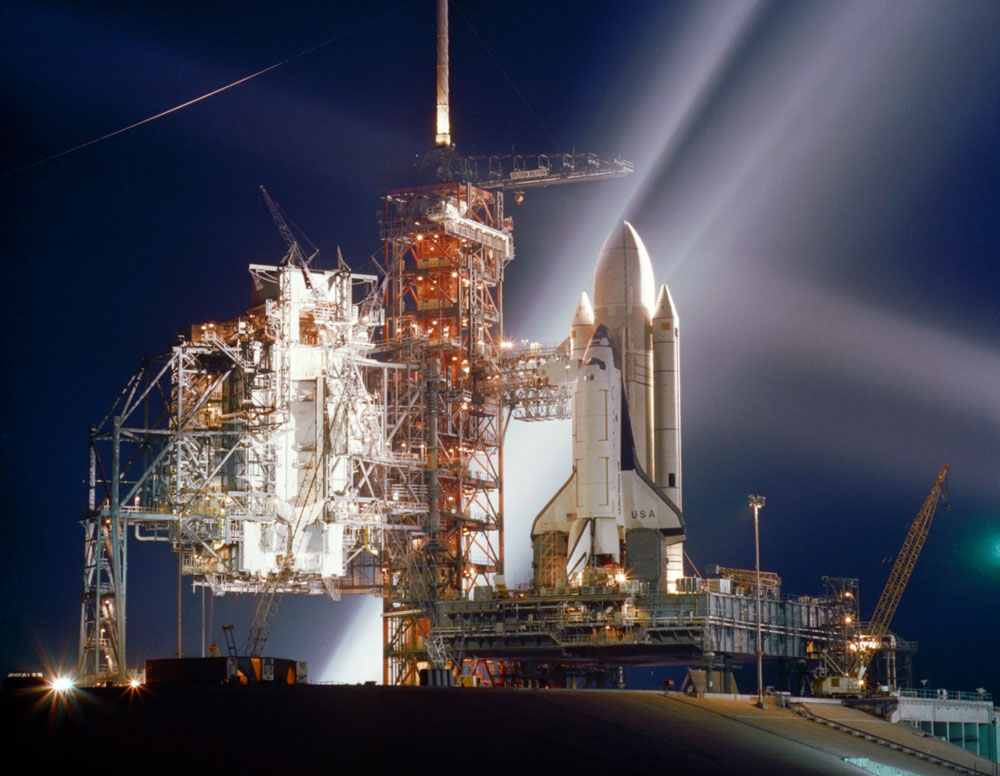Epic NASA video celebrates 40 years of the space shuttle
It's been 40 years since NASA's first space shuttle soared into orbit and the space agency has unveiled a new video to commemorate that debut flight, which opened up access to space in a way not ever seen before.
NASA's first space shuttle mission, STS-1 aboard the orbiter Columbia lifted off from NASA's Kennedy Space Center near Orlando on April 12, 1981. To get there, the flight had to overcome numerous budgetary, timeline and design challenges along the way to get there. Americans attending the launch in Florida, near Orlando, jumped up and down and cheered, the new NASA video on YouTube shows.
Archival footage shows the crew launching to space. Besides a few lost heat shield tiles along the way, the flight went well and allowed the crew to return normally after a two-day test flight, on April 14. "Our intent is primarily to make sure the crew will get up like we want to, and get down like we want to," crew member Bob Crippen said at a press conference around that time.
In photos: NASA's first space shuttle flight, STS-1 on Columbia
STS-1 was the first launch from American soil since the Apollo-Soyuz Test Project of 1975; Americans were glad to see astronauts once again leaving again from Florida, in much the same way that the commercial crew program's debut did in 2020 after a nine-year drought of launches from the United States. (The last launch of the shuttle was in 2011, although astronauts did fly on Russian Soyuz spacecraft from Kazakhstan in the years in between.)
The shuttle program was unique in that it allowed astronauts to land on a runway, the NASA video points out, unlike any other human program before it. The program proved more expensive to launch people than hoped, but its achievements were remarkable — launching famed observatories such as Hubble and Chandra, and helping to construct the International Space Station.
The video shows a few hints of the diverse sorts of astronauts the shuttle brought into orbit. Sally Ride — shown in the video briefly — was the first American woman in space in 1984 and, after her death, was also revealed as the first known LGBTQ+ astronaut.
Breaking space news, the latest updates on rocket launches, skywatching events and more!
Related: Casio digital watch marks 40 years since first space shuttle launch
Other examples of cultural milestones shuttle allowed included the first African-American (Guion Bluford), the first Asian-American (Ellison Onizuka), the first space shuttle commander (Eileen Collins) and numerous international astronauts, the latter arrangement leading to intergovernmental agreements that eventually formed the backbone of the ISS program. In fact, the ISS was not the first space station a shuttle docked with; that was Russian-Soviet space station Mir, during the shuttle-Mir program of the 1990s.
The video also mentions the shuttle persisting through 30 years of missions and continuing to return to its mandate of bringing people into space. While the video does not make specific mention of this, the generation of operations also included two fatal accidents — Challenger in 1986 (which killed Onizuka, first teacher in space Christa McAuliffe and five others) and the Columbia disaster in 2003 that killed seven more astronauts. These incidents each forced suspensions of the program while NASA addressed the shuttle's underlying flaws. The shuttle did, however, continue both times and helped complete the first phase of the ISS construction.
2021 also marks the tenth anniversary of the shuttle's retirement; the last flight was STS-135, whose landing on July 21, 2011 is shown in the video (it's the one in darkness with the contrails flowing behind the shuttle's wings.) The shuttle's legacy still looms large after a decade, with Hubble still operating well thanks to the efforts of multiple astronaut repair and upgrade crews, and Lego releasing one of the iconic orbiters (Discovery) as a new set just a few weeks ago — not to mention the ISS thriving after more than 20 years of continuous human occupation.
Follow Elizabeth Howell on Twitter @howellspace. Follow us on Twitter @Spacedotcom and on Facebook.

Elizabeth Howell (she/her), Ph.D., was a staff writer in the spaceflight channel between 2022 and 2024 specializing in Canadian space news. She was contributing writer for Space.com for 10 years from 2012 to 2024. Elizabeth's reporting includes multiple exclusives with the White House, leading world coverage about a lost-and-found space tomato on the International Space Station, witnessing five human spaceflight launches on two continents, flying parabolic, working inside a spacesuit, and participating in a simulated Mars mission. Her latest book, "Why Am I Taller?" (ECW Press, 2022) is co-written with astronaut Dave Williams.

